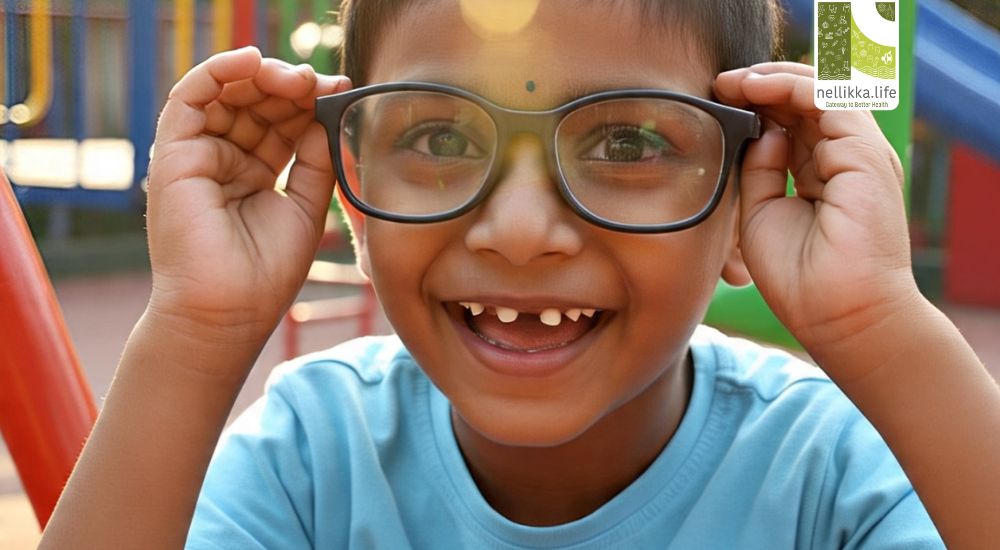Common Vision Problems in Children and the Importance of Early Detection

Good vision is critical to a child’s overall development—whether it’s learning, playing, or exploring the world around them. But did you know that nearly 1 in 5 children may have undiagnosed vision issues that can interfere with their education, confidence, and quality of life? The good news: Most childhood eye problems can be treated effectively, especially if detected early.
Let’s take a closer look at some of the most common vision problems in children and why early detection is vital.
Common Vision Problems in Children
1️⃣ Refractive Errors
These are the most frequent vision problems among children and include:
- Myopia (Nearsightedness): Difficulty seeing distant objects clearly. Increasing screen time and reduced outdoor activities have led to a sharp rise in childhood myopia globally, a phenomenon often termed “the myopia epidemic” .
- Hyperopia (Farsightedness): Difficulty focusing on nearby objects, which can affect reading and concentration.
- Astigmatism: Blurred vision caused by an irregularly shaped cornea, leading to distorted images at all distances.
Signs to watch: Squinting, frequent headaches, eye rubbing, sitting too close to the TV, or poor performance in school.
Amblyopia (Lazy Eye)
Amblyopia occurs when one eye develops poor vision due to lack of use, even when glasses or contacts correct the vision. It is the most common cause of visual impairment in children.
Why it matters: If untreated by around 7 to 9 years of age, the brain may permanently ignore signals from the weaker eye, leading to lifelong vision issues.
Strabismus (Crossed or Misaligned Eyes)
Strabismus refers to eyes that don’t align properly, with one eye possibly turning inward, outward, upward, or downward.
Impact: It can cause double vision or poor depth perception and may lead to amblyopia if not corrected.
Color Vision Deficiency (Color Blindness)
While less common, color blindness can affect learning, especially in classrooms using color-coded materials. Boys are more likely to inherit this genetic condition.
Other Concerns
- Congenital Cataracts: Clouding of the eye’s lens present at birth.
- Blocked Tear Ducts: Common in infants, causing constant tearing or eye discharge.
- Pediatric Glaucoma: Increased eye pressure damaging the optic nerve; rare but serious.
Importance of Early Detection
Why early detection is key:
- Vision problems can interfere with learning, sports, and confidence.
- Some conditions, like amblyopia, have a critical window for treatment during early childhood.
- Eye screenings often catch issues before symptoms become obvious to parents or teachers.
Recommended Eye Check Timeline:
At Birth: Basic eye health assessment by a pediatrician
6 Months: First comprehensive eye exam (especially for high-risk infants)
3 Years: Visual acuity and eye alignment check
Before Starting School: Full eye exam
Annually: For children with glasses, known eye conditions, or family history
How to Protect Your Child’s Vision
✅ Limit excessive screen time and encourage outdoor play
✅ Ensure balanced nutrition, rich in Vitamin A, Omega-3s, and leafy greens
✅ Watch for symptoms like squinting, covering one eye, or poor hand-eye coordination
✅ Regular eye exams, even if there are no complaints
Children often assume everyone sees the world the same way they do. Without regular vision checks, many eye conditions go unnoticed, potentially affecting academic and social development. With early detection and timely treatment, most childhood vision problems can be managed or even reversed—helping your child see their world clearly.Protect your child’s future by ensuring their vision is crystal clear—because every child deserves to see the world in focus.
References :
1. Global Prevalence of Myopia and High Myopia and Temporal Trends from 2000 through 2050
2.Children & Digital Eye Strain
3.Common Early Childhood Vision Disorders




